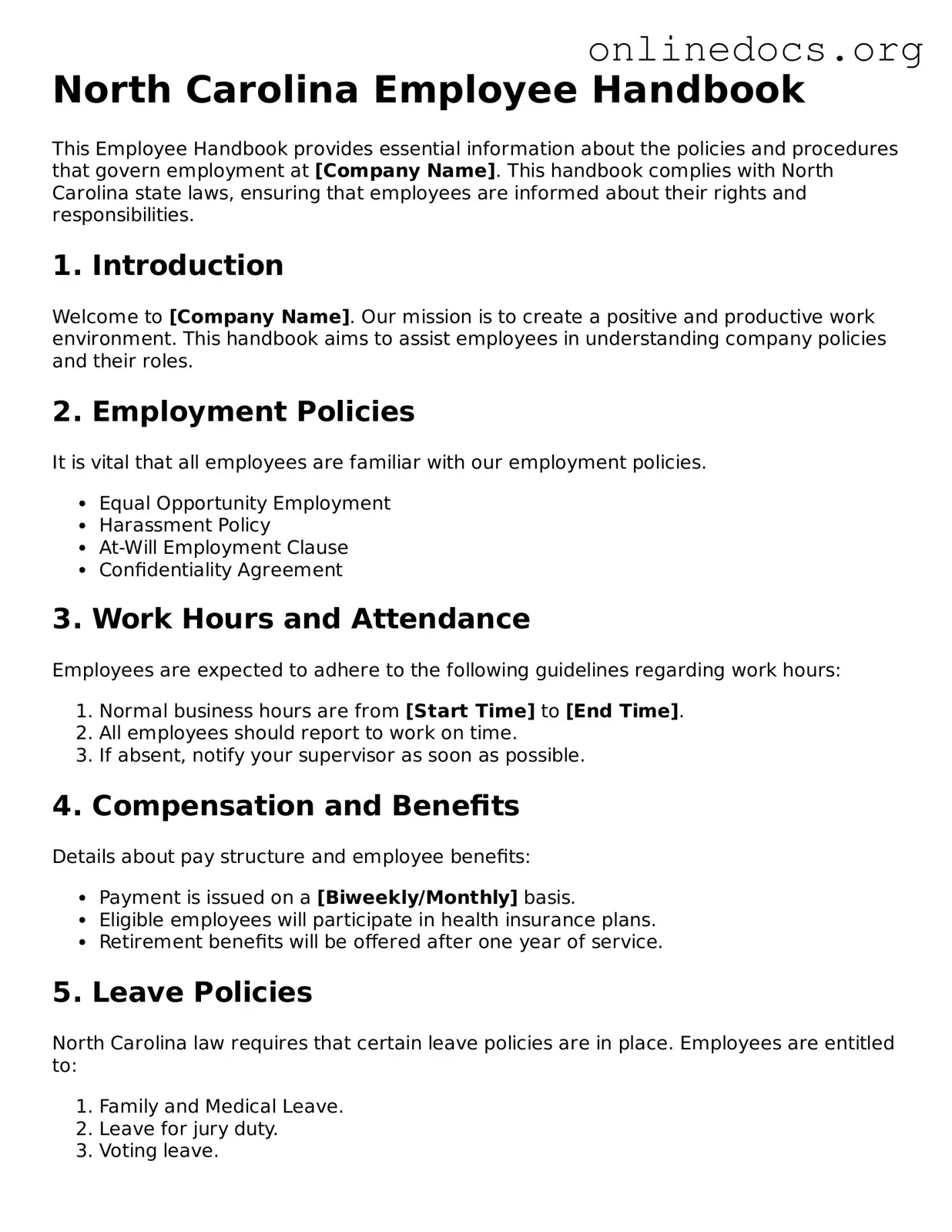The North Carolina Employee Handbook serves as a crucial guide for both employers and employees, outlining workplace policies, expectations, and rights. A similar document is the Employee Manual, which also provides detailed information about company policies, procedures, and benefits. While an employee handbook often focuses on the legal aspects of employment, an employee manual may include more practical advice on daily operations and employee responsibilities, creating a comprehensive resource for navigating the workplace.
Another related document is the Orientation Guide. This guide is typically distributed during the onboarding process and introduces new hires to the company's culture, mission, and values. Unlike the Employee Handbook, which covers policies in depth, the Orientation Guide is more focused on helping new employees acclimate to their work environment, making it a vital tool for fostering early engagement and understanding.
To ensure that your personal wishes are respected after your passing, it is vital to prepare a thorough document like a "detailed Last Will and Testament form." This form aids in the systematic allocation of your assets and the appointment of guardianship for dependents. For those looking to take this significant step towards future planning, further details can be found by visiting the following link: detailed Last Will and Testament form.
The Policy and Procedures Manual is also comparable. This document outlines specific workplace policies and procedures that govern employee behavior and company operations. While the Employee Handbook provides a broader overview, the Policy and Procedures Manual delves into specific rules, ensuring that employees are aware of the expectations and consequences of their actions within the workplace.
The Code of Conduct is another document that shares similarities with the Employee Handbook. This code establishes the ethical standards and behavioral expectations for employees. While the Employee Handbook may touch on these topics, the Code of Conduct typically provides more explicit guidelines regarding acceptable and unacceptable behaviors, helping to maintain a respectful and professional work environment.
Job Descriptions are also relevant. These documents outline the responsibilities, qualifications, and expectations for specific positions within the company. While the Employee Handbook addresses broader policies, Job Descriptions focus on individual roles, ensuring that employees understand their specific duties and how they contribute to the organization's goals.
The Benefits Summary is a related document that details the various benefits offered to employees, such as health insurance, retirement plans, and paid time off. While the Employee Handbook may mention these benefits, the Benefits Summary provides a concise overview, allowing employees to easily understand their options and make informed decisions regarding their employment benefits.
Performance Evaluation Guidelines are another document that complements the Employee Handbook. These guidelines outline the process for assessing employee performance, including criteria, timelines, and feedback mechanisms. While the Employee Handbook may touch on performance expectations, these guidelines provide a structured approach to performance management, ensuring that employees receive constructive feedback and opportunities for growth.
The Safety Manual is also essential. This document outlines safety protocols and procedures designed to protect employees in the workplace. While the Employee Handbook may include a section on safety, the Safety Manual provides detailed instructions and guidelines for maintaining a safe work environment, addressing specific hazards and emergency procedures.
Lastly, the Employee Rights and Responsibilities document is similar in purpose. This document outlines the legal rights of employees, including anti-discrimination laws, wage and hour regulations, and workplace safety rights. While the Employee Handbook may provide a general overview of employee rights, this document focuses specifically on legal protections, ensuring that employees are informed about their rights and responsibilities under the law.
